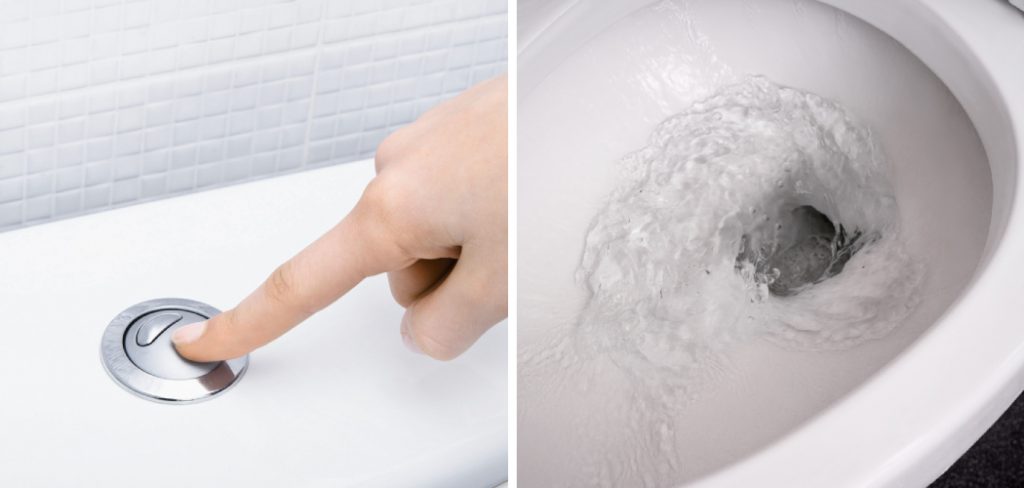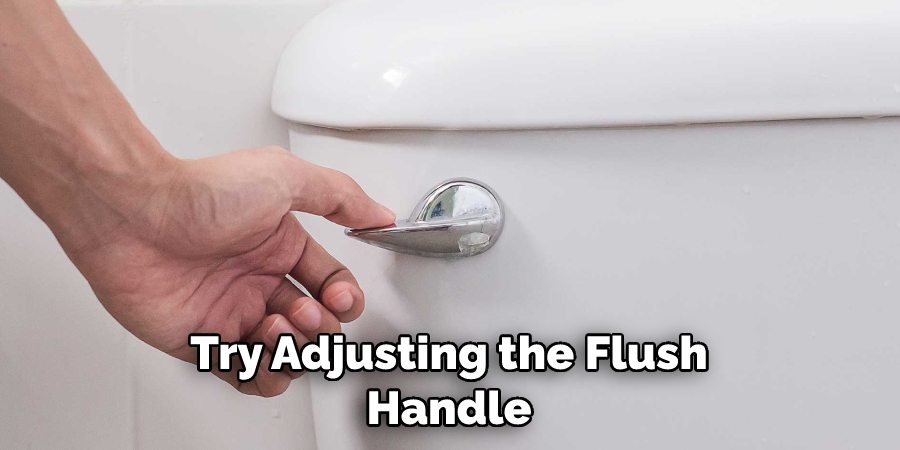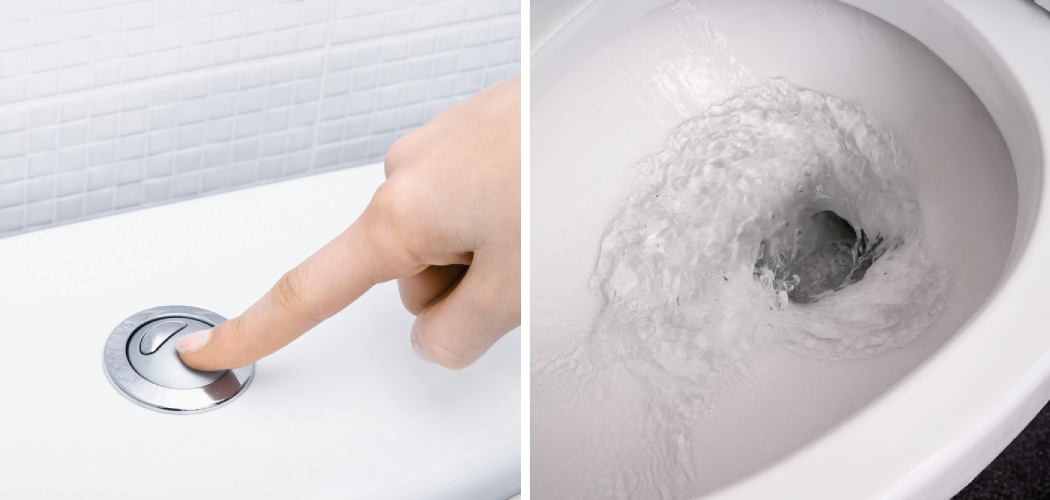Are you having trouble with a weak or ineffective toilet flush? If you’re tired of dealing with an underpowered flush, then it’s time to take action.
If you’ve ever faced the frustration of a weak, ineffective toilet flush and have been unable to find a solution, then fear not – this blog post provides helpful advice on how to make your toilet flush stronger. With simple tips and tricks ranging from repairs like replacing old valves and tanks to easy-to-install DIY upgrades such as water-saving flappers, anyone can get their toilet working better in no time.

In this blog, we’ll take you through all the steps necessary to ensure your toilet is back up and running with a powerful flush in no time – from troubleshooting current issues to more complicated maintenance tasks for ensuring long-term performance.
What are the Causes of Weak Flushing?
Before you start any repairs or upgrades, it’s important to understand the potential causes of weak flushing. Common issues include a clogged toilet bowl, worn valves, and tanks, outdated toilets that lack water-saving features, and incorrect installation of new parts.
If your toilet is clogged, the most common cause is likely a blockage in the toilet bowl or drain line. To fix this, you can use a plunger to dislodge the object causing the clog and restore water flow.
If your toilet has been worn over time, you likely need to repair or replace valves and tanks. A weak flush could also be caused by an outdated toilet that lacks water-saving features. To upgrade, you can install a new flapper or other water-saving devices in order to get the most out of your flush.
Finally, if you’ve recently installed new parts, then make sure they were correctly installed and that all connections are sound. A poorly installed part could cause your toilet to flush weakly.
What Will You Need?
Once you understand the potential causes of your weak flush, it’s time to take action. Depending on how severe the issue is, you may need different tools and materials, such as:
- Plunger
- Screwdrivers
- Replacement parts (flappers, valves, tanks)
- Adjustable wrench
- Plumber’s putty or silicone caulk
- Cleaning supplies

By having the correct tools and materials ready, you can ensure you have everything you need for a successful repair or upgrade.
10 Easy Steps on How to Make Your Toilet Flush Stronger
Step 1. Check the Flapper Valve:
The flapper is located at the bottom of the tank and is responsible for how much water is released into the bowl. Ensure the flapper is clean and properly positioned so that it can open fully when flushed. Otherwise, the water won’t be released properly, resulting in a weak flush.
Step 2. Adjust the Water Level in Your Tank:
If your toilet has an adjustable float or valve, then you may be able to adjust how much water flows into the bowl. This could help with a weak flush if there isn’t enough water entering the bowl when you flush. If the float is stuck, then you may need to replace it.
Step 3. Replace Worn-Out Parts:
If your valves or tanks are worn out, they may not be working properly and need to be replaced. Be sure to purchase parts that are compatible with your make and model of toilet and follow the manufacturer’s instructions for installation. Don’t forget to turn off the water supply before starting.
Step 4. Clean Out Clogged Drains:
If your drain is clogged, use a plunger to dislodge any blockages in the pipe or bowl and clear out any debris. You can also use an auger or drain snake to reach further into the pipe. You may need to call a professional plumber if the clog is severe.
Step 5. Tighten Connections:
Check all connections between your tank, bowl, valves, flappers, and other components to ensure they are properly sealed and secure. You may need an adjustable wrench to do this. These connections can become loose over time and cause a weak flush.

Step 6. Install a Water-Saving Flapper:
Installing a water-saving flapper can help you conserve water while getting more power from each flush. Be sure to purchase a flapper that is compatible with your toilet model. Additionally, you may need to use a plumber’s putty or silicone caulk when installing a new flapper.
Step 7. Clean the Entire Bowl:
Using a cleaner of your choice, clean the entire bowl to remove any build-up that could be blocking water flow and causing weak flushing. You may need to use an acid-based cleaner if there is a mineral buildup. It will be important to follow the instructions on any cleaner you use.
Step 8. Check for Leaks:
Check all connections and replace any worn or damaged parts to make sure there are no leaks in your plumbing system. You may need to use a plumber’s putty or silicone caulk to seal these connections properly. Try running dye down your drain to check for leaks.
Step 9. Test Your Flush:
Once you have completed all of the steps above, it’s time to test out how powerful your flush is now! Give it a few tries and adjust any settings as needed. Don’t forget to turn on the water supply before you flush.
Step 10. Enjoy Your Strong Flush:
Your toilet should now be flushing powerfully, and you can enjoy the convenience and efficiency of your upgraded plumbing! Be careful not to overfill the tank; always check for leaks before leaving. Remember to clean the bowl regularly and replace any worn-out parts as needed.
By following these steps, you should be able to make your toilet flush stronger in no time! Whether it’s a clog, worn out parts, or an outdated system, you can easily troubleshoot and repair any weak flush issues with the right tools and materials.
5 Additional Tips and Tricks
1. If the flushing power isn’t strong enough, try adjusting the flush handle. A loose or unaligned handle could simply cause a slow or weak flush.

2. Make sure the water supply to the toilet tank is turned on all the way and that there are no kinks in the hose leading from it to the tank.
3. Check for blockages in the toilet trap or vent system by running a snake through them regularly, as these can cause reduced flushing power.
4. You may want to consider replacing your old flush valve with a newer model if yours is outdated or corroded and unable to adjust how much water enters the tank when you flush.
5. If none of these tips work, you may need to replace the entire toilet with one that has a better flushing capability. This will cost more than just adjusting how much water enters the tank, but it may be the best option in some cases.
By following these tips, you should be able to make your toilet flush stronger and more efficient. With a little bit of effort, you will be able to save time and money on water bills. So don’t hesitate – to start working on improving your toilet flush today!
5 Things You Should Avoid
1. Avoid using too much toilet paper, which can block the drain and cause a weak flush.
2. Don’t pour grease or fats down your drains, as this can clog up your pipes and reduce the power of the flush.
3. Avoid flushing things like cotton swabs, dental floss, and other foreign objects that are not meant for flushing, as these can get caught in the pipes and reduce water pressure.
4. Never put large amounts of tissue paper at once; this could lead to a blockage resulting in a weak flush.
5. Lastly, avoid pouring chemical cleaners into your toilet bowl; over time, they can corrode parts of your toilet, causing damage and reducing the strength of your flush.

These are just a few of the common mistakes people make when it comes to making your toilet flush stronger. By avoiding these practices, you can help ensure that your toilet flushes as powerfully and efficiently as possible.
Which Type of Toilet Flush is Best?
When it comes to strengthening your toilet flush, the type of toilet flush you choose is key. Toilets with a dual-flush system will give you the most powerful flush, as they allow for more water and pressure to be used in each flush than single-flush toilets.
Additionally, choosing a toilet with an efficient design, such as a gravity-assisted or pressure-assisted flushing system, can also help increase the strength of your flush. These designs use water more efficiently, allowing it to move more quickly through the pipes and providing a more powerful push when pressing down on the handle.
Finally, try using less water in each flush by using low-flow toilets designed specifically for conserving water. This will help reduce water waste and increase your flush’s power.
Conclusion
In conclusion, making your toilet flush stronger is achievable and doesn’t have to be daunting. With just a few adjustments and a little bit of elbow grease, you can enjoy having your toilet work at maximum flushing power! Most of these techniques are simple and do not require professional help.
Moreover, remembering the tips outlined in this blog post on how to make your toilet flush stronger will help prevent major clogs and maintenance nightmares in the future. Keep in mind that the condition of your pipes affects how well your toilet works, so cleaning it regularly will benefit both yourself and your home.
Furthermore, if you ever find that you need a helping hand or aren’t able to make these changes on your own, bring in a professional who is experienced and knowledgeable about all things related to plumbing. Taking proactive steps with your toilet today can ensure stronger flushes for years to come!

